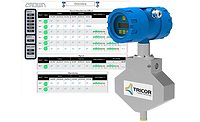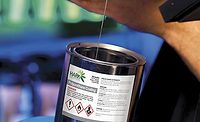Coatings manufacturers face an uphill climb when it comes to regulatory compliance. Working with thousands of chemicals, specialty components and complex supply chains, the safety and logistics alone can weigh down businesses and overwhelm regulatory staff.
Managing safety data sheets (SDSs), including keeping them up-to-date in the various formats, is challenging enough for a commodity producer dealing with dozens of products. It can be simply unmanageable for paint manufacturers with thousands of products.
Further complicating the task is the complexity of pigment master batch evaluations under Globally Harmonized Systems (GHS)-based calculations. Fitting these specialty products into compliance guidelines requires not only attention to detail, but also a focus on data security, given the specialty, often proprietary, components involved.
HazCom Changes Create Even More Challenges
Paint manufacturers and formulators are often trading across multiple jurisdictions, requiring numerous versions of these complicated SDSs in multiple languages. Adding to the challenge, compliance guidelines are a moving target. Chemical regulations governing hazard communications, chemical inventory, transportation, impurities, disposal and paperwork continue to evolve and expand.
Hazard communication (safety data sheets, worker right to know) is a very timely topic in the United States with the Occupational Safety and Health Administration HazCom 2012 deadline fast approaching on June 1, 2015. Manufacturers are required to have the U.S. adaptation of the UN Globally Harmonized System for Classification and Labeling (often referred to as GHS or the “Purple Book”) implemented for all products shipped after that date. Unfortunately the “globally harmonized” portion of the name is misleading since different countries and regions have adopted the Purple Book guidelines into their legal requirements in different ways with different thresholds, and several regulations include additional requirements beyond what is found in the Purple Book. For instance, the EU Classification, Labeling and Packaging (CLP) regulations are different than the U.S. OSHA HazCom 2012 regulations. The OSHA GHS modifications are expected to have profound effects on five million workplaces and more than 43 million workers.
Compliance Issues Can Impact the Bottom Line
Success as a paint formulator comes in part through the creation of proprietary color palettes and pigment master batches (intermixes). Using these methods, companies can control and minimize variation within raw materials, aiding both manufacturing and compliance.
The OSHA HazCom 2012 regulations require SDSs to possess a much greater level of detail concerning chemical concentrations. For example, the upper range of allowable limits in a given master batch will need to be worked into a health hazard category calculation, requiring updated, prescriptive calculations as well as decisions on whether to keep existing color palette(s) or establish an additional palette.
Such decisions become more than just a workload issue for the compliance department – they affect the entire business. Here are some examples of the ways you may soon be affected:
- Sourcing may need new specifications written up by the Quality Department;
- Bills of materials may need to be adjusted;
- Manufacturing (BOM) instructions may need updating;
- Logistics could face inventory that needs to be worked down or made obsolete.
What may be currently viewed as a paper exercise in compliance could build into a bottom line dollar impact if not carefully managed.
The financial burden may also be felt when it comes to appropriate waste disposal. It’s expensive to dispose of hazardous waste. If not done properly, it can cause significant liability for the company. Tracking levels of heavy metals and other hazardous components in coatings products heading for disposal is yet another cross-functional activity where the days of pen and paper are over.
For example, retailers that carry products provided by the coatings industry are under tremendous pressure from regulators and nongovernmental organizations to have quality control systems in place that ensure proper disposal of heavy metals and other hazardous components in coatings products. Improper disposal can cause a significant liability for the company. Heavy fines are now quite common, and retailers are demanding accurate documentation from their suppliers in order for products to be kept on their shelves. The days where digital compliance systems were nice-to-haves are now must-haves for the industry to keep up.
Waste regulations are not at all harmonized, even between states. Keeping track of which states have waste regulations and their various definitions requires an extensive set of rule logic that can be applied to product after product in a timely, consistent fashion.
Automating Compliance
As hazard communications continue to evolve, the need to automate compliance becomes obvious. Deciding when and how to act is more difficult. Committing to the wrong third-party software can lead to fragmented systems, outdated protocols, unnecessary middlemen and closed off information loops in your supply chain.
As such, it is critical to seek out a trusted software solution to automate chemical compliance and develop a central repository that offers data security that ensures privacy of formulations while also providing documentation accessibility to all participants. Company requirements vary, but the coatings industry requires flexible systems with automated programming logic capable of processing a vast amount of data for thousands of products in a reasonable timeframe.
A cross-functional team of experienced professionals is needed to define company requirements that incorporate all business needs and regulatory considerations. Additionally, data such as the heavy metal content of raw materials should be collected for use in hazard evaluations, safety data sheet (SDS) disclosures and ad hoc customer queries on regulatory topics such as Restriction of Hazardous Substances Directive RoHs and Coalition of Northeaster Governors (CONEG) heavy metal requirements.
The WERCS (Worldwide Environmental Regulatory Compliance Standards) is one third-party option with particular strengths in flexibility, automation and customizability. The system can be modified to include additional fields and phrases in just a matter of minutes. Components can be established and specific data set up to be utilized in rule logic for specialty items such as color palettes. The same data logic engines also power their supply chain compliance platform called WERCSmart that now reviews more than one trillion dollars of chemical-containing products each year that are sold by the world’s top 20 retailers.
The power and flexibility that retailers currently utilize can also drive compliance for coatings manufacturers. Its logic engines automate GHS classifications in line with multiple distinct regional guidelines such as OSHA HazCom2012, EU CLP and China GBT. For companies with international supply chains, this is a major step towards simplifying hazard communications.
For coatings manufacturers, its scalable solution intelligently determines what varying requirements need to be met, regardless of language, country or regulatory specialist style. The derived data can then be integrated with your ERP, PLM, labeling and formulation systems, thus minimizing the common, error-prone process of manually re-entering information.
Constant change and expansion is a hallmark of regulatory protocols. Today, there are hundreds more regulations than there were just three years ago, and thousands more when compared with 10 years ago. Simply stated, the global regulatory community is moving much faster than businesses can possibly react. With the OSHA GHS deadline fast approaching, the breadth of data that is now required for every product – from the purchase of the raw materials to the end of product life – makes clear that the days of manual upkeep and filing are gone. The need for a flexible, digital compliance solution is paramount.
For more information, visit www.thewercs.com.





Report Abusive Comment